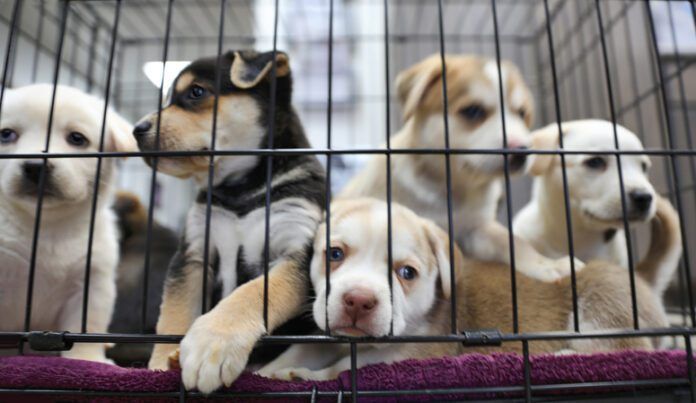I was scrolling through social media one day when I saw a press release from a shelter that’s located in a nearby county:
AnimalSave, in partnership with the Center for Animal Protection and Education (CAPE) and Sammie’s Friends, is working to expand the number of low-cost spay and neuter appointments available to the Nevada County (CA) community. As a result, AnimalSave will be offering additional spay and neuter appointments through July, August, and September 2024, or until the current funding is exhausted.
My immediate response was jealousy, or perhaps it was envy. Three organizations—a lower-cost spay/neuter clinic (AnimalSave), a rescue and sanctuary group (CAPE), and the public shelter whose social media I follow (Sammie’s Friends), put together some funding to hire the additional staff required to increase the number of lower-cost spay/neuter surgeries that the clinic could perform on dogs and cats, and to offer lower-income owners vouchers that would reduce their cost of those surgeries (whether from AnimalSave or the owners’ regular veterinarians). I have to hand it to the folks responsible for this group effort to reduce the population of unwanted dogs and cats in their community. Why isn’t my local shelter doing something like that?
I often hear complaints from dog owners in my area that 1), It’s hard to get an appointment for spay/neuter at any of our local veterinary hospitals, waiting times are long, and 2), that these surgeries are prohibitively expensive—so much so, that many owners give up on the idea of birth control for their pets (and the inevitable unintended pregnancies and birth of unwanted litters occur).
Some communities are lucky to have lower-cost spay/neuter clinics available. Forty years ago, my sister married a veterinarian who specialized in opening clinics that provided only those services (and vaccinations). They referred sick animals to other practitioners and provided only high-quality, high-volume, spay/neuter services—and they were profitable, and the vets had reliable work schedules. (Veterinary school students, take note!) But my former brother-in-law retired ages ago and none of the practices he founded, or others like them, are anywhere near me.
Communities that have been successful in reducing the population of unwanted pets usually have employed various creative ways to increase the rate of spay/neuter of owned dogs and cats, as well as trapped/neutered/released feral cats. But in every community, this takes MONEY—for the establishment of facilities to do surgery and reliable staffing (or the regular engagement of mobile spay/neuter practices), and outreach to the community to let them know these services are available. Voucher programs that bring lower-cost services down even further, or to make these services free of cost altogether, might be needed to reach the very lowest-income population.
So why doesn’t my local shelter form partnerships that result in the reduction of unwanted puppies and kittens in our area? What it tends to come down to is a lack of personnel, paid or volunteer, to look for opportunities to apply for partnerships or grants. There are a number of organizations that offer grants to shelters or rescues that provide spay/neuter services— but my local shelter’s budget is too tight to employ someone to look for opportunities to reduce the need for sheltering and animal control services! It’s a Catch-22 that keeps the shelter full.
What is being done in your community to reduce shelter populations? Please share if you are involved in helping to reduce the overpopulation of dogs and cats.







Why is putting a moratorium on breeding more animals not an option that I ever hear discussed. We all know that just because animals are purebreds doesn’t mean they don’t land up in shelters and people still love the status of having a pure bred when there’s all these animals being killed in shelters . And now with all these new designer dogs who 30 years ago, would’ve been a mutt and up for adoption, now they’re thousands of dollars and they just keep breeding more and more. Spay and neuter is not enough if breeders are continuing to breed more cats and dogs
My community is a mess. They are understaffed and underfunded, well that is the city shelter. The county doesn’t have one and the city won’t take county animals. They say they are building one, but I haven’t seen any movement on it. So, the county “euthanizes” strays if they can’t find anyone immediately to take them, at least temporarily. The shelter will have special spay/neuter programs once or twice a year to help out. One question I have is why don’t more people spay/neuter when it is free or lower cost? I think a lot of people just don’t care. When they have unwanted litters, there is no where to take them, because the shelter is always full, so they dump them out in the county if they can’t give them away or sell them. That is where 2 of our dogs came from, maybe all 3!
Francine, I know where you are coming from. It would help if we could just get all the puppy mills shut down and stop backyard breeders. There is just no easy answer here. I always thought I would be able to get one more pure bred Lab, but along came another dumped dog. He is a Golden, probably not purebred, but he is close and has all the traits of a Golden. We think he won the lottery when he ended up here. I know we won!
EVERY non-profit is in need of money and volunteers! From gardening clubs to fraternal organizations, they all need more resources.
I read, several years ago, that one community required a license (for a fee) to breed their pet. And fined pet owners a large fee for having an unlicensed litter. I would hope that collected fees would support a low-cost/free spay-neuter program. Great idea, probably needs volunteers and some money to carry this out.
A number of years ago a few like minded and fairly well off individuals came together and formed and organization to off free/low cost spay and neuter in our community. Originally it was all mobile, the motorhome contained all the equipment and the vet traveled around the community. The organization now has a building and continues to provide the services in addition to vaccines.
Needless to say, his was a monumental effort requiring a lot of time and commitment to the fundraising efforts. Additionally the annual fundraising efforts are a lot of work also.
I had the pleasure of serving on the board of this organization and as treasurer for 3 years.
Thank you for all your hard work. You saved many lives.